Puget Systems Genesis II Quiet Workstation Review
by Dustin Sklavos on May 22, 2013 12:01 AM EST- Posted in
- Systems
- Xeon
- Puget Systems
- Workstation
- desktops
Workstation Performance
Unfortunately, despite its workstation pedigree, the Puget Systems Genesis II Quiet suffers mightily in SPECviewperf due to its consumer-grade GeForce GTX 670. For gaming that card is fine, but workstation applications place higher and different demands on the graphics hardware and drivers. As you'll see, though, the Genesis II Quiet will need a workstation card to fulfill its potential.
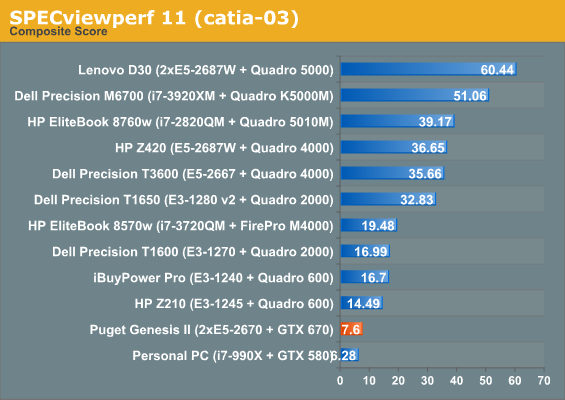
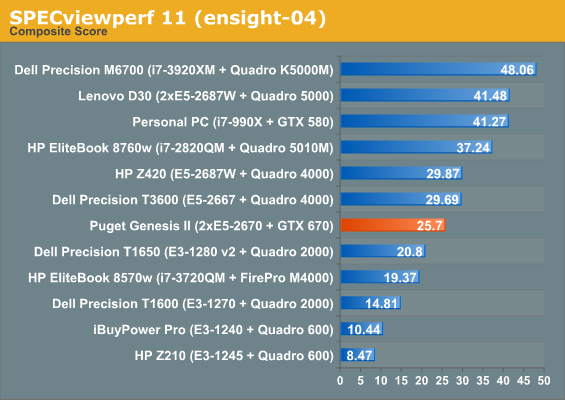
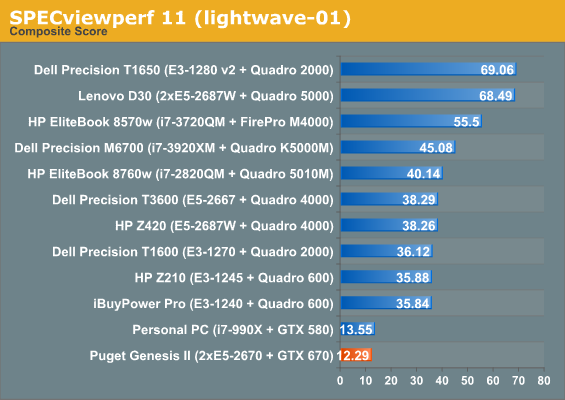
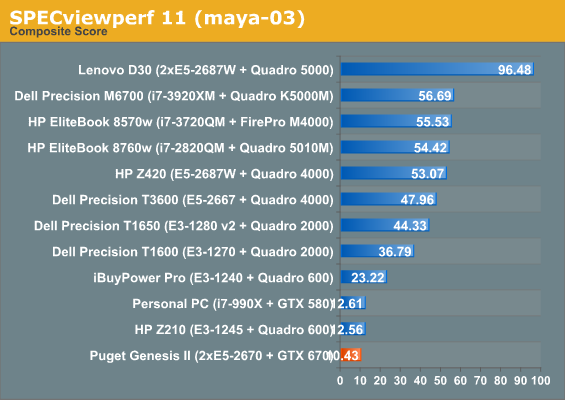
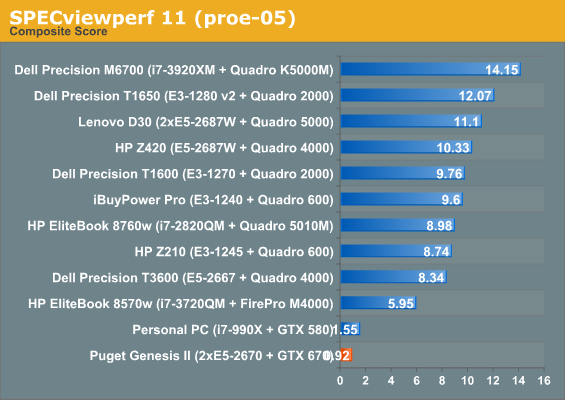
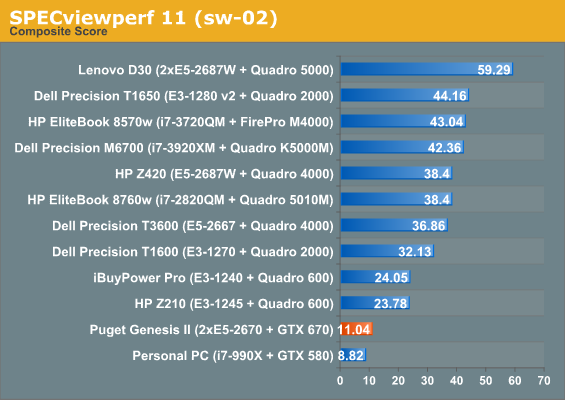
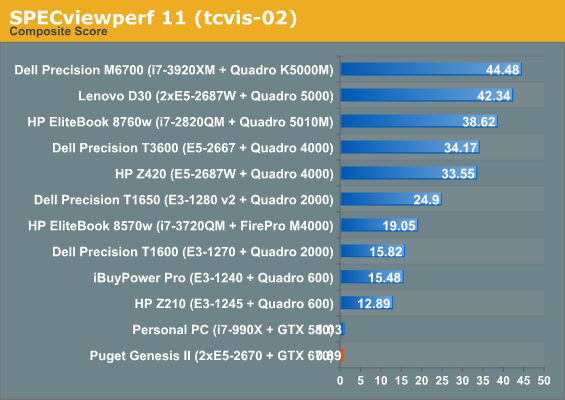
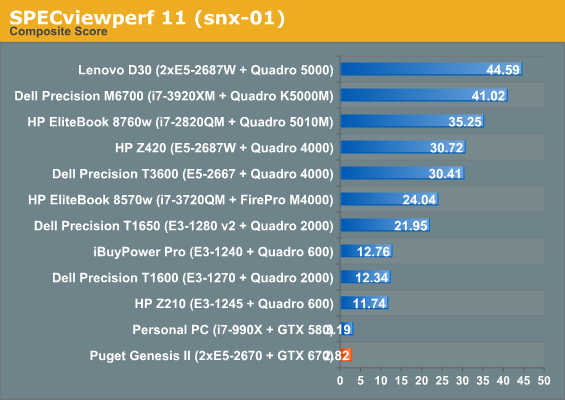
It's not even a little bit slower, it's worlds slower. Compare the performance of the GTX 670 to even the entry-level, $145 Quadro 600. With rare exception, even 96 last-generation CUDA cores are able to produce tremendous performance gains with the right drivers over a beast like the GTX 670. Even if you're a prosumer, you owe it to yourself to jump over to a workstation card if your workload demands one.
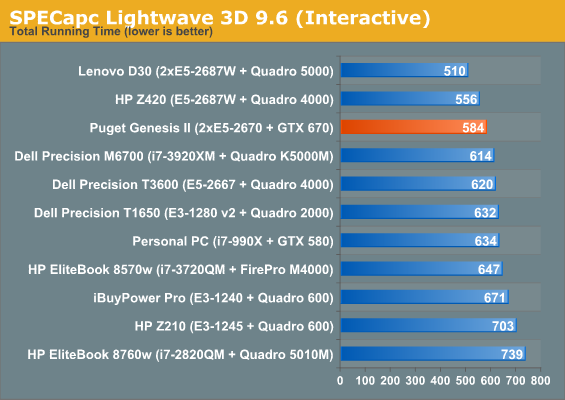
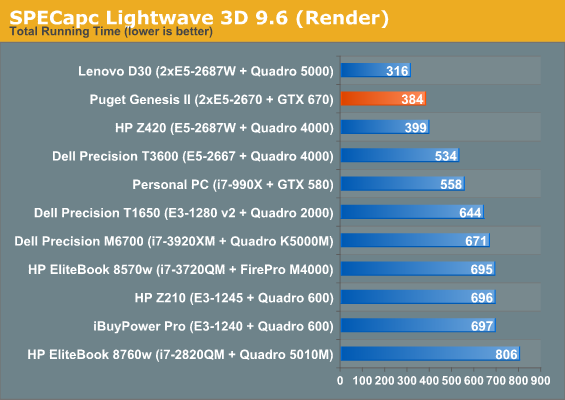
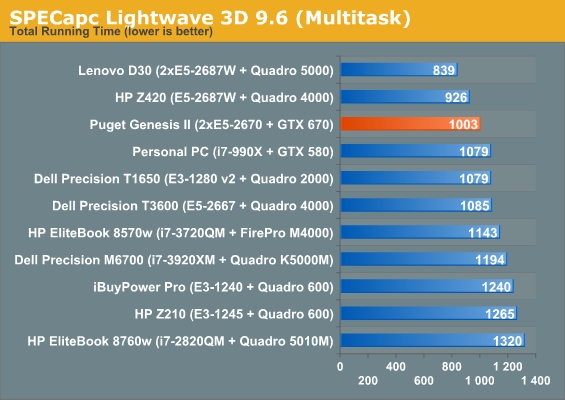
Lightwave is a bit kinder to the Genesis II Quiet, limited primarily by CPU performance. There's a point of diminishing returns that Lightwave reaches, and it still seems to respond well to high core clocks. Still, if you use Lightwave, you owe it to yourself to run an octalcore processor. Whether or not you need a second one is debatable, but at least a single one is enough to produce a jump in performance.










18 Comments
View All Comments
Death666Angel - Wednesday, May 22, 2013 - link
"if your workload can't take advantage of the extra cores you've effectively left performance on the table by going for more cores instead of fewer, faster ones."Wasn't Turbo Boost and the like supposed to take care of that issue? If the other 2/4 cores in the hexa/octa core aren't used, power gate them and allocate the left over TDP to the active cores by increasing their clocks. Unless that only works until 4 cores and not above, it seems to be more an arbitrary limitation Intel puts in place to cement their profits, like they do with various other feature differences between processors. I don't see a reason they can't release octa core for the enthusiast market as an extreme edition for the LGA2011. They just don't want to cut into their Xeon market share and profits is my guess. Same reason why there aren't hexa core LGA1155 CPUs (I don't buy that the platform can't feed them fast enough).
SodaAnt - Wednesday, May 22, 2013 - link
I think the reason is that there's more power limitations. It takes a lot more power and thermals to run 8 cores, with 2 of those cores at a really high clock frequency, than it does to run a simple duel core computer at the same high clock frequency.cknobman - Wednesday, May 22, 2013 - link
The review talks about how cool the configuration runs but we never get to see any temps.Why no temps?
Death666Angel - Wednesday, May 22, 2013 - link
Penultimate site under "Noise and Heat".alpha754293 - Wednesday, May 22, 2013 - link
I wonder how the GTX Titan would have performed on the SPEC Viewperf 11 benchmark...bminor13 - Wednesday, May 29, 2013 - link
Seconded; would the GTX Titan compete with the workstation cards in terms of compute performance (price and cost-effectiveness aside)?RoslynWan12 - Wednesday, May 22, 2013 - link
til I saw the receipt 4 $9132, I accept that my brothers friend was like they say really bringing in money part time on-line.. there sisters roommate had bean doing this for only about 6 months and resently repaid the mortgage on their place and purchased Acura. this is where I went, Bow6.comCHECK IT OUTRedStar - Monday, May 27, 2013 - link
case sure looks a whole lot like my p180 antec case